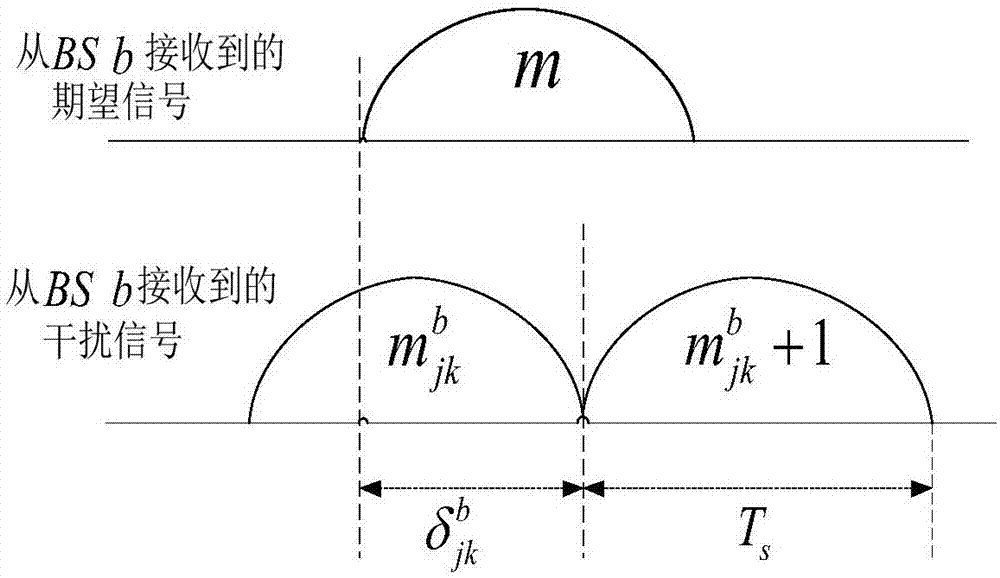Multi-base station cooperative communication system asynchronous interference rejection method
A cooperative communication and asynchronous interference technology, applied in the transmission system, radio transmission system, electrical components, etc., can solve the problems of feedback channel bandwidth limitation, unsynchronized signals, difficult to interfere with signal synchronization, etc.
- Summary
- Abstract
- Description
- Claims
- Application Information
AI Technical Summary
Problems solved by technology
Method used
Image
Examples
Embodiment Construction
[0055] In order to make the object, technical solution and advantages of the present invention clearer, the present invention will be further described in detail below in conjunction with the accompanying drawings and embodiments. It should be understood that the specific embodiments described here are only used to explain the present invention, not to limit the present invention.
[0056] Such as figure 1 As shown, in the embodiment of the present invention, an asynchronous interference suppression method for a multi-base station cooperative communication system is proposed, which is applied to a multi-base station cooperative communication system (such as figure 2 As shown in ), the frequency reuse factor of the multi-base station cooperative communication system is 1, and multiple base stations are distributed in different cells and serve multiple users at the same time. Since users inside a cell can eliminate interference between users through OFDMA technology, a method ...
PUM
 Login to View More
Login to View More Abstract
Description
Claims
Application Information
 Login to View More
Login to View More - R&D
- Intellectual Property
- Life Sciences
- Materials
- Tech Scout
- Unparalleled Data Quality
- Higher Quality Content
- 60% Fewer Hallucinations
Browse by: Latest US Patents, China's latest patents, Technical Efficacy Thesaurus, Application Domain, Technology Topic, Popular Technical Reports.
© 2025 PatSnap. All rights reserved.Legal|Privacy policy|Modern Slavery Act Transparency Statement|Sitemap|About US| Contact US: help@patsnap.com



